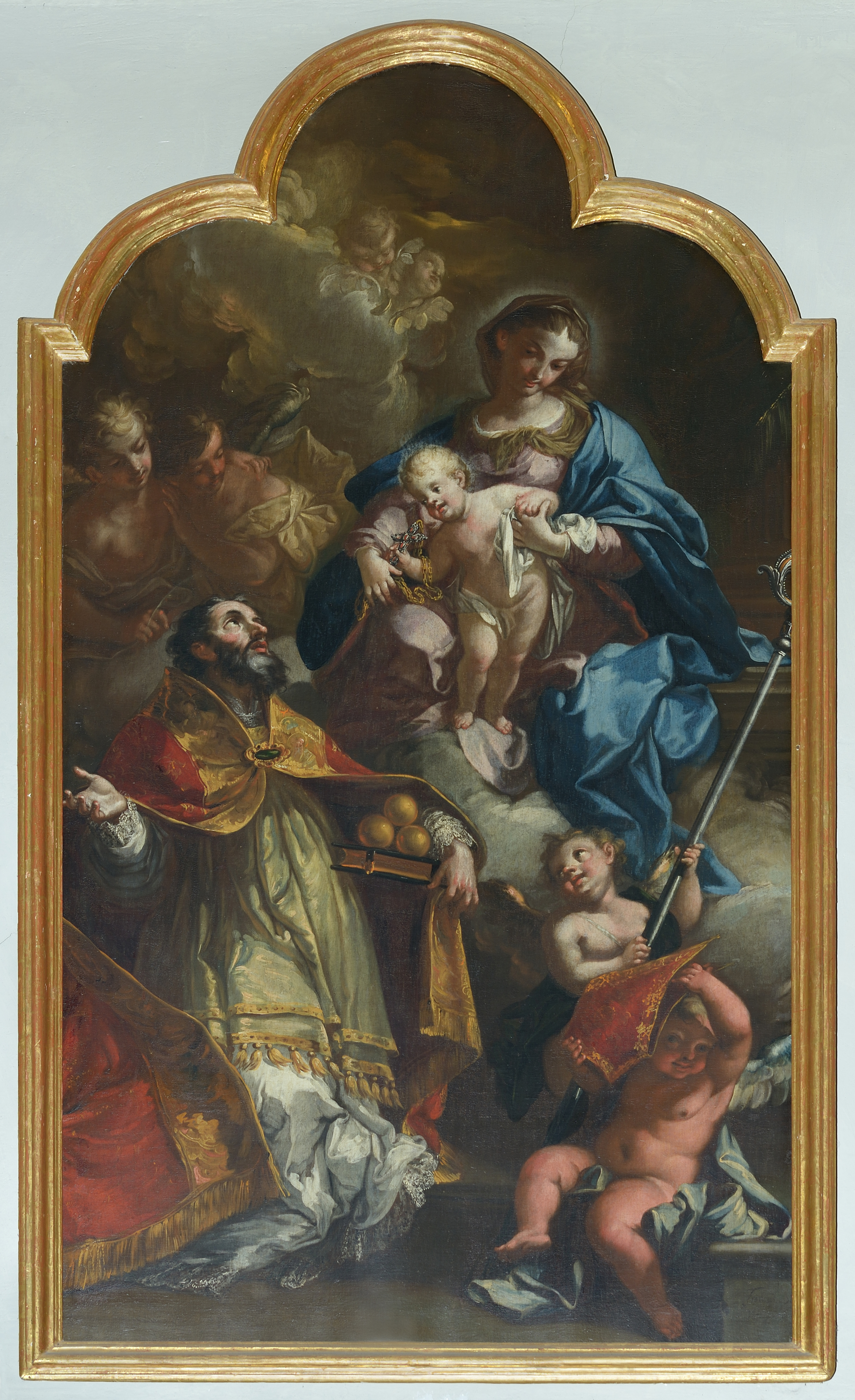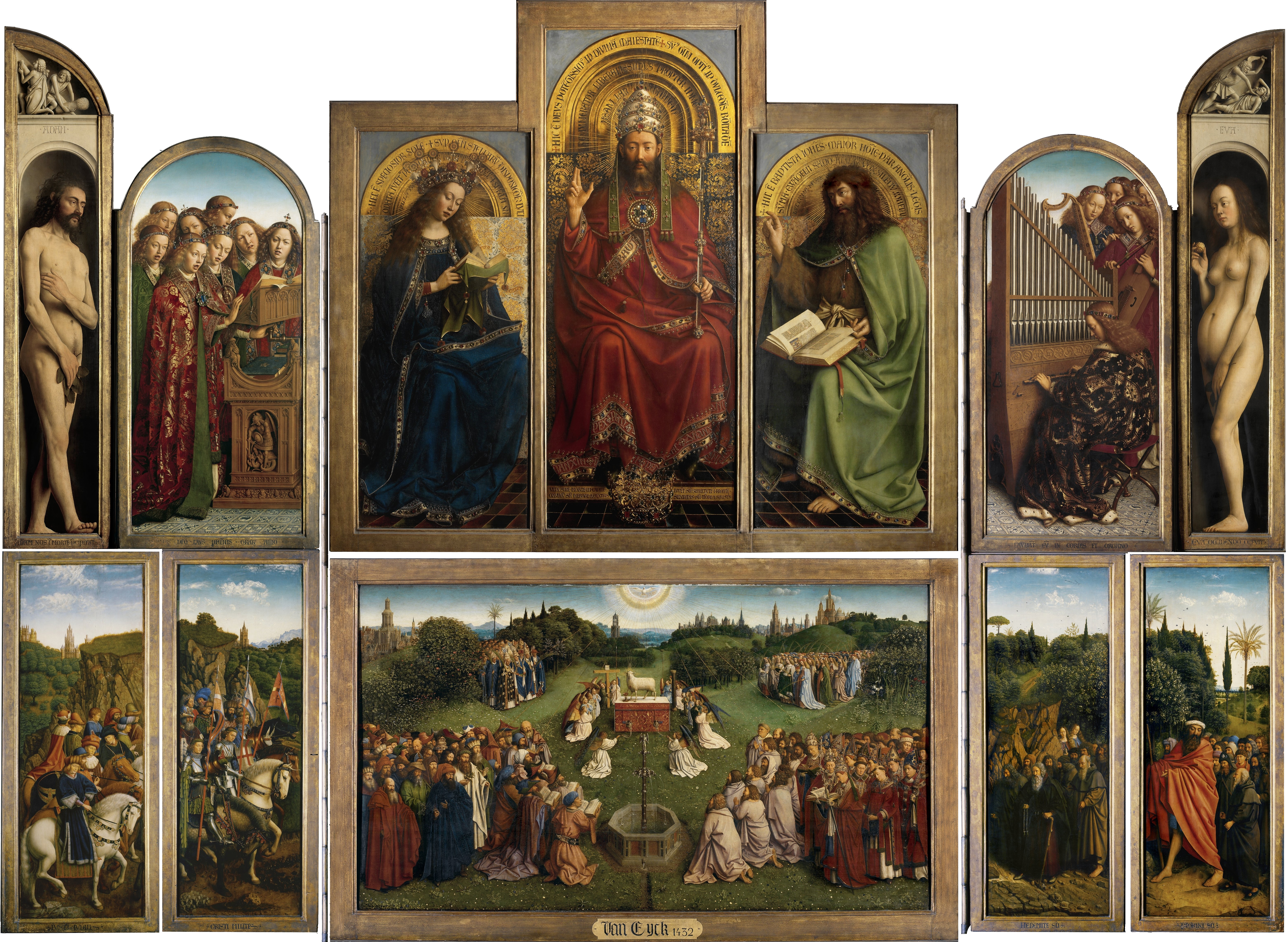|
Franz Sebald Unterberger
Franz Sebald Unterberger, or Unterperger (1 August 1706, Cavalese - 23 January 1776, Cavalese) was a South Tyrolean painter in the Baroque style. Biography His father, Christoph Unterberger (1668–1747), was an Imperial forest warden. His grandfather, Oswald, had come from Pustertal to Fleimstal sometime around 1620. His brother, Michelangelo, and his nephews, Ignaz and Christoph, were also painters. According to the art historian, , Franz was the most talented of the group, but received insufficient recognition during his lifetime.Nicolò Rasmo: ''Franz Sebald Unterperger Maler 1706–1776.'' Bozen 1977. His artistic training took place almost entirely within the family environment; primarily from Michelangelo, who was eleven years his senior. Time spent in Venice had a significant stylistic effect; with especially notable influence derived from the works of Giovanni Battista Pittoni and Giovanni Antonio Guardi. He spent great deal of his life in Brixen, before returning t ... [...More Info...] [...Related Items...] OR: [Wikipedia] [Google] [Baidu] |
Brixen
Brixen (, ; it, Bressanone ; lld, Porsenù or ) is a town in South Tyrol, northern Italy, located about north of Bolzano. Geography First mentioned in 901, Brixen is the third largest city and oldest town in the province, and the artistic and cultural capital of the valley. It is located at the confluence of the Eisack and Rienz rivers, north of Bolzano and south of the Brenner Pass, on the Italy-Austrian border. It is flanked on the eastern side by the Plose and Telegraph (Monte Telegrafo) mountains (2,504 m) and on the western side by the Königsanger (Monte Pascolo) (2,436 m) mountain. Brixen is especially known as a major skiing resort (the Plose). Other activities include hydroelectric power, orchards, and vineyards. ''Frazioni'' ''Frazioni'' / incorporated villages: Afers (Eores), Albeins (Albes), Elvas, Gereuth, Karnol, Klerant (Cleran), Kranebitt (Costa d'Elvas), Mahr (La Mara), Mairdorf, Mellaun (Meluno), Milland, Pairdorf (Perara), Pinzagen (Pinzago), Plabach, Rutz ... [...More Info...] [...Related Items...] OR: [Wikipedia] [Google] [Baidu] |
Religious Artists
Religion is usually defined as a social- cultural system of designated behaviors and practices, morals, beliefs, worldviews, texts, sanctified places, prophecies, ethics, or organizations, that generally relates humanity to supernatural, transcendental, and spiritual elements; however, there is no scholarly consensus over what precisely constitutes a religion. Different religions may or may not contain various elements ranging from the divine, sacred things, faith,Tillich, P. (1957) ''Dynamics of faith''. Harper Perennial; (p. 1). a supernatural being or supernatural beings or "some sort of ultimacy and transcendence that will provide norms and power for the rest of life". Religious practices may include rituals, sermons, commemoration or veneration (of deities or saints), sacrifices, festivals, feasts, trances, initiations, funerary services, matrimonial services, meditation, prayer, music, art, dance, public service, or other aspects of human culture. Religions have ... [...More Info...] [...Related Items...] OR: [Wikipedia] [Google] [Baidu] |
Austrian Painters
This is a list of notable painters from, or associated with, Austria. A * Josef Abel (1768–1818) * Fritz Aigner (1930–2005) * Joseph Matthäus Aigner (1818–1886) * Tivadar Alconiere (1797–1865) * Oz Almog (born 1956) * Franz Alt (1821–1914) * Rudolf von Alt (1812–1905) * Anton Altmann (1808–1871) * Friedrich von Amerling (1803–1887) * Heinz Anger (born 1941) * Christian Attersee (born 1940) * Josef Maria Auchentaller (1865–1949) B * Alfred Basel (1876–1920) * Herbert Bayer (1900–1985) * Franz von Bayros (1866–1924) * Tommaso Benedetti (1797–1863) * Julius Victor Berger (1850–1902) * Joseph Bergler (1753–1829) * Joseph Binder (1798–1864) * Eduard Bitterlich (1833–1872) * Karl von Blaas (1815–1894) * Tina Blau (1845–1916) * Otto Böhler (1847–1913) * Friedrich August Brand (1735–1806) * Antonietta Brandeis (1849–1910) * Arik Brauer (1929–2021) * Günter Brus (born 1938) C * Hans Canon (1829–1885) * Franz Cau ... [...More Info...] [...Related Items...] OR: [Wikipedia] [Google] [Baidu] |
1776 Deaths
Events January–February * January 1 – American Revolutionary War – Burning of Norfolk: The town of Norfolk, Virginia is destroyed, by the combined actions of the British Royal Navy and occupying Patriot forces. * January 10 – American Revolution – Thomas Paine publishes his pamphlet '' Common Sense'', arguing for independence from British rule in the Thirteen Colonies. * January 20 – American Revolution – South Carolina Loyalists led by Robert Cunningham sign a petition from prison, agreeing to all demands for peace by the formed state government of South Carolina. * January 24 – American Revolution – Henry Knox arrives at Cambridge, Massachusetts, with the artillery that he has transported from Fort Ticonderoga. * February 17 – Edward Gibbon publishes the first volume of '' The History of the Decline and Fall of the Roman Empire''. * February 27 – American Revolution – Battle of Moore' ... [...More Info...] [...Related Items...] OR: [Wikipedia] [Google] [Baidu] |
1706 Births
Seventeen or 17 may refer to: *17 (number), the natural number following 16 and preceding 18 * one of the years 17 BC, AD 17, 1917, 2017 Literature Magazines * ''Seventeen'' (American magazine), an American magazine * ''Seventeen'' (Japanese magazine), a Japanese magazine Novels * ''Seventeen'' (Tarkington novel), a 1916 novel by Booth Tarkington *''Seventeen'' (''Sebuntiin''), a 1961 novel by Kenzaburō Ōe * ''Seventeen'' (Serafin novel), a 2004 novel by Shan Serafin Stage and screen Film * ''Seventeen'' (1916 film), an American silent comedy film *''Number Seventeen'', a 1932 film directed by Alfred Hitchcock * ''Seventeen'' (1940 film), an American comedy film *''Eric Soya's '17''' (Danish: ''Sytten''), a 1965 Danish comedy film * ''Seventeen'' (1985 film), a documentary film * ''17 Again'' (film), a 2009 film whose working title was ''17'' * ''Seventeen'' (2019 film), a Spanish drama film Television * ''Seventeen'' (TV drama), a 1994 UK dramatic short starring Christien ... [...More Info...] [...Related Items...] OR: [Wikipedia] [Google] [Baidu] |
Biographisches Lexikon Des Kaiserthums Oesterreich
''Biographisches Lexikon des Kaiserthums Oesterreich'' (English, ''Biographical Encyclopedia of the Austrian Empire'') (abbreviated ''Wurzbach'' from the author's surname) is a 60-volume work, edited and published by Constantin von Wurzbach, containing about 24,254 critical biographies of notable personages in every walk of life and from all parts of the Austro-Hungarian monarchy who were born, lived or worked there during the period 1750–1850. See also * ''Österreichisches Biographisches Lexikon 1815–1950'' (ÖBL) References External links *ws Text at German-language Wikisource *alo Biographisches Lexikon des Kaiserthums Oesterreichat Austrian Literature Online **ws Volume 1 (1856): A – Blumenthal ** [...More Info...] [...Related Items...] OR: [Wikipedia] [Google] [Baidu] |
North Tyrol
North Tyrol, rarely North Tirol (german: Nordtirol), is the main part of the Austrian state of Tyrol, located in the western part of the country. The other part of the state is East Tyrol, which also belongs to Austria, but does not share a border with North Tyrol. Besides those two regions, the historical region of Tyrol for many centuries also included the South Tyrol and the historical region of Welschtirol, which were annexed by Italy after World War I. With that, North Tyrol and East Tyrol were effectively cut off from each other. In the aftermath of World War I, there was a serious movement to unify North Tyrol with Bavaria.Carsten, Francis Ludwig. ''The First Austrian Republic: 1918-1938''. Gower, 1986. P. 3. North Tyrol borders Salzburg in the east, the German federal state of Bavaria in the north, Vorarlberg to the west, the Swiss canton of Graubünden (Grison) to the southwest, and South Tyrol in Italy to the south. The provincial capital is Innsbruck. See also *Ty ... [...More Info...] [...Related Items...] OR: [Wikipedia] [Google] [Baidu] |
Trentino
Trentino ( lld, Trentin), officially the Autonomous Province of Trento, is an autonomous province of Italy, in the country's far north. The Trentino and South Tyrol constitute the region of Trentino-Alto Adige/Südtirol, an autonomous region under the constitution. The province is composed of 166 '' comuni'' (municipalities). Its capital is the city of Trento (Trent). The province covers an area of more than , with a total population of 541,098 in 2019. Trentino is renowned for its mountains, such as the Dolomites, which are part of the Alps. Etymology The province is generally known as "Trentino". The name derives from Trento, the capital city of the province. Originally, the term was used by the local population only to refer to the city and its immediate surroundings. Under former Austrian rule, which began in the 19th century (previously, Trentino was governed by the local bishop), the common German name for the region was ''Welschtirol'' () or ''Welschsüdtirol'' ... [...More Info...] [...Related Items...] OR: [Wikipedia] [Google] [Baidu] |
Altarpiece
An altarpiece is an artwork such as a painting, sculpture or relief representing a religious subject made for placing at the back of or behind the altar of a Christian church. Though most commonly used for a single work of art such as a painting or sculpture, or a set of them, the word can also be used of the whole ensemble behind an altar, otherwise known as a reredos, including what is often an elaborate frame for the central image or images. Altarpieces were one of the most important products of Christian art especially from the late Middle Ages to the era of the Counter-Reformation. Many altarpieces have been removed from their church settings, and often from their elaborate sculpted frameworks, and are displayed as more simply framed paintings in museums and elsewhere. History Origins and early development Altarpieces seem to have begun to be used during the 11th century, with the possible exception of a few earlier examples. The reasons and forces that led to the develo ... [...More Info...] [...Related Items...] OR: [Wikipedia] [Google] [Baidu] |
Giovanni Antonio Guardi
Giovanni Antonio Guardi (1699 – 23 January 1760), also known as Gianantonio Guardi, was an Italian painter and nobleman. Guardi was one of the founders of the Venetian Academy in 1756. Biography He was born in Vienna into a family of nobility from Trentino. His father Domenico (born in 1678) was a Baroque painter. Gianantonio and his brothers Niccolò and Francesco (also painters), later inherited the family workshop after their father's death in 1716. They probably all contributed as a team to some of the larger commissions later attributed to his brother Francesco Guardi. His sister Maria Cecilia married the pre-eminent Veneto-European painter of his epoch, Giovanni Battista Tiepolo. He may have received his artistic training in Vienna, where he is first recorded in 1719, but had established a workshop in Venice by 1730. Among his first important clients was the connoisseur and collector Johann Matthias von der Schulenburg, for whom Guardi created numerous paintings ... [...More Info...] [...Related Items...] OR: [Wikipedia] [Google] [Baidu] |
Cavalese
Cavalese (''Cavalés'' in local dialect) is a ''comune'' of 4,004 inhabitants in Trentino, northern Italy, a ski resort and the main center in the Fiemme Valley. It is part of the Magnifica Comunità di Fiemme (Magnificent Community of Fiemme) and, together with Predazzo, is the administrative, cultural and historical center of the valley. The town is a renowned tourist location, during winter for cross-country and alpine skiing, and during summer for excursions. The cable car from Cavalese to the nearby mountain Cermis has been the site of two major cable-car accidents, one in 1976 and one in 1998. History The origins of Cavalese can be dated back to the Bronze Age, with the creation of a small settlement. The proper village developed during the 12th century, with the creation of mills, sawmills and blacksmiths for copper manufacturing along the Gambis brook. By that time, the Fiemme Valley was ruled by prince bishop of Trento, which allowed a broad autonomy to the local com ... [...More Info...] [...Related Items...] OR: [Wikipedia] [Google] [Baidu] |


%2C_by_John_Trumbull.jpg)
.jpg)

